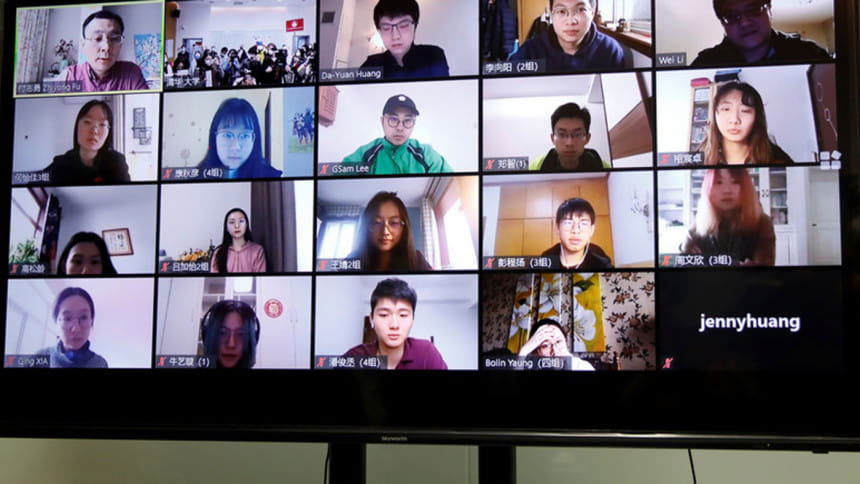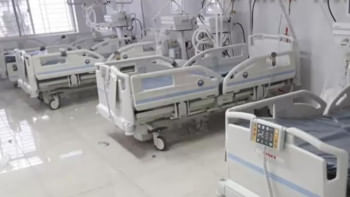Virtual learning is no longer the future—it is here.

The spectre of Covid-19 has descended on the planet so suddenly that almost all spheres of human life have been caught off guard. And the education sector is no exception. The pandemic has badly affected the global education landscape leading to the wholesale closure of schools, colleges and universities. The shadow of gloom caused by the contagion, the sudden disruptions in academic life, and the considerable uncertainty about a return to normalcy are all disconcerting indeed. And since there is little chance of the situation changing anytime soon, governments, educationists and think tanks are trying to work out a viable solution to minimise its impact on education. They are looking for an alternative method of teaching/learning in a bid to ensure sustainability in the academia. Most are learning towards virtual education at the moment, and the Ministry of Education and the University Grants Commission (UGC) in Bangladesh have also agreed to it in principle and are negotiating a way forward. But there are detractors too, trying to pick holes in the system. What to do, then? Suspend all academic activities until the end of the pandemic, or try a viable alternative while going through it?
We are living in an age of remarkable technological progress. Fast connectivity with unprecedented processing power, enormous storage capacities, unlimited access to information, technological breakthroughs in the fields of Artificial Intelligence (AI), robotics, Internet of Things (IoT), autonomous vehicles, 3-D printing, nanotechnology, and quantum computing are all mind-blowing experiences that have revolutionised the methods of education and research. We can easily make use of these tools and achievements to shape and re-shape the teaching and learning strategies of our time.
In keeping with these brilliant ICT feats and global needs, experts have set three aims for 21st-century education—empowering students with transferable skills to cope with the fast and constantly changing global landscape; helping them make the best use of the information readily available; and striving to prepare an entire generation of learners for the 21st-century workforce. In addition, the Partnership for 21st Century Learning Framework has identified four basic skills for the present generation of students: creativity, critical thinking, communication and collaboration. Teaching techniques and modalities of the 21st century should be geared to achieving these targets and skills.
For instance, education and technology have beautifully combined to form an innovative pedagogy to impart learning. The SAMR Model is an example of the integration of education and technology. It is a framework created by Dr Ruben Puentedura for selecting, using, and evaluating technology in education. The SAMR Model can be an effective way of assessing one's choice of technology for their modes of teaching. The model suggests four stages, i.e. Substitution, Augmentation, Modification and Redefinition. Substitution and Augmentation are regarded as "Enhancement" steps, and Modification and Redefinition as "Transformation" steps. In layman's terms, Enhancement is like "seasoning an old recipe" and Transformation is like "creating an entirely new, original dish". Susan Oxnevad, an American educator and specialist in professional learning, innovation and engagement, referred to this movement across the spectrum as "teaching above the line".
With the enormous achievements in ICT, humankind has arrived on the brink of a new revolution called the Fourth Industrial Revolution (4IR). The first Industrial Revolution used steam, the second used electricity to mechanise production, and the third used electronics and information technology to automate the manufacturing processes. Now the fourth Industrial Revolution is emerging based on the digital revolution over the last few decades. It is a fusion of technologies that combines the physical, digital and biological spheres. It is developing exponentially and affecting almost every aspect of human life. It may completely change the way we live, work and connect with each other. However, we have yet to fully comprehend how we will deal with a transformation of this nature that humankind has never experienced before. One thing is certain, though: the response to the Fourth Industrial Revolution must be comprehensive and well-coordinated. And hence, we need to develop creative skills, cognitive agility, problem-solving skills, critical thinking skills, etc. which are subject to acquisition through learning. And the flipped classroom model is considered a better approach to this learning. It shifts the emphasis from teaching to learning and creates an active and collaborative environment enabling students to demonstrate their creativity, innovation, problem-solving and other skills that are needed for their life and living.
The "new normal" means anything done in society to meet the immediate needs in an out-of-the-ordinary way. Not fully depending on long-standing educational norms and tools—brick-and-mortar classrooms, rows of desks, face-to-face interaction, chalkboards, Dewey Decimal library, heavy bags, mass lectures, public exams—the new normal in education means a paradigm shift, i.e. from teachers to students; from public space to personal space; from conventional classroom teaching to virtual or remote teaching; and from summative to formative method of assessment. The education technology for emergencies should be designed in consonance with the principles of the new normal.
Students should, therefore, try various online tools for different learning purposes. The tools are effective for collation of ideas and development of collaborative responses. They can facilitate the acquisition of different 21st-century skills, boost engagement and interaction with the process of learning, and bolster their sense of innovation. Discussion forums, chat groups, learning forums and many other learning management tools can be useful in this regard.
Implementation of virtual education may sometimes be impeded by teachers' inexperience, students' lack of opportunity, inadequate internet connectivity and power outage, lack of digital learning resources and institutional inability. Exclusion of any student from the system may create "an inequality of opportunity" and dampen their spirit which could be a deviation from the SDG 4 and UNESCO's EFA movement. However, the challenges cited above can also be seen as the source of opportunity as suggested by Albert Einstein—that "in the middle of difficulty lies opportunity."
Universities are like bicycles. If you don't ride and keep pushing the paddles, they will fall. So, whatever happens, they need to be kept functional. We have to think innovatively and implement education strategies in view of this whole spectrum of natural, environmental, social, political, cultural and other related issues. And to this end, we should welcome any mode of education that offers a greater degree of flexibility. Against the backdrop of Covid-19 pandemic, online learning is thus gaining a foothold across the globe. Most of the institutions are in favour of it at this moment, as it can help minimise the impact of the pandemic on education. It is the need of the hour. To replace a conventional mode of education with a viable alternative in emergencies and to gradually mainstream it is surely a better option.
Dr Rashid Askari is Vice Chancellor of Islamic University Bangladesh.
Email: [email protected]

 For all latest news, follow The Daily Star's Google News channel.
For all latest news, follow The Daily Star's Google News channel. 



Comments